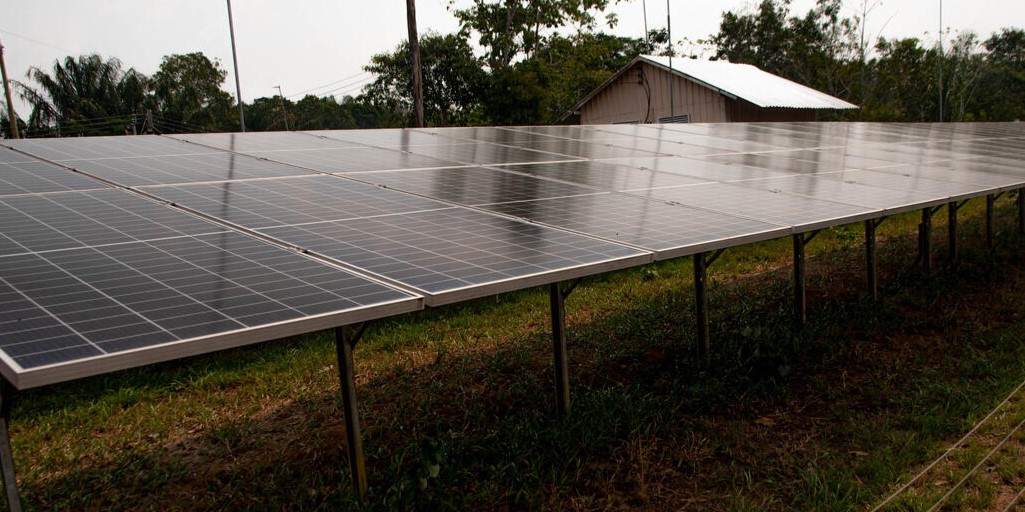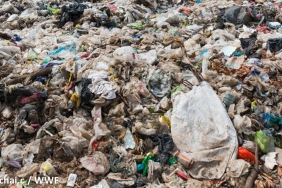SOLAR CELLS FROM HIBISCUS
The increase in the basic electricity tariff (TDL), which has hit people's lives, especially the economically weak, has made us realize the unsolved problem of the electrical energy crisis. We are also reminded of the various choices of energy sources.
By SRI REJEKI
Solar power is seen as an ideal solution to the electrical energy source crisis because it is cheap, pollution-free, and natural. Solar energy is also expected to be a solution to the limited fossil fuels and global warming. The amount of solar energy that reaches the earth every minute reaches 700 megawatts or 10,000 times greater than the entire world's energy usage.
Unfortunately, the use of solar cells as a source of electrical energy is still very limited due to the high cost of the main material for cell modules, namely silicon. More than 90 percent of solar cells used today are made primarily of silicon.
Although the market is showing growth, its use is still limited due to the high cost of silicon. Similarly, the use of other inorganic materials, such as GaSb/GaAs, AlGaSb, ZnO, C1GS (copper indium gallium selenide with a complex structure), are also not cheap.
Organic material based
Therefore, researchers from all over the world are also competing to find alternative solar cell devices that are cheap with rational quality and easy to fabricate.
One of them is organic material-based solar cells, namely by using natural dyes. Such organic materials are easily obtained in Indonesia at a low price, given the abundant natural resources.
The organic materials chosen are those that have the ability to absorb sunlight photons at visible light wavelengths. The broader the absorption spectrum, the better the ability to excite-raise the energy level-from electrons to the electrode (TiOi).
Ari Handono Ramelan from the team of the Center for Materials and Energy Studies of the Faculty of Mathematics and Natural Sciences (FMIPA) of Sebelas Maret University, Solo, together with a team from the University of New South Wales, Australia, developed hibiscus flowers, duwet fruit, pomegranate flowers, and turmeric as organic materials for organic solar cells.
Light absorber
The coloring structure in the extracted flowers or fruits acts as a light absorber and triggers the flow of electrons in the system. This extraction is mixed with TiCb nanoporous semiconductor into a thin layer. This solar cell is known as Dye-Sensitized Solar Cell (DSSO) which is expected to be a new generation of solar cells to replace silicon.
The use of dyes as photosensitizers can increase the electrical output produced by solar cells.
The development of organic solar cells based on natural dyes and nanomaterials, according to Ari, has also been carried out by many researchers from America, Japan, Australia, and Germany.
""With this kind of competition, it is hoped that high efficiency and cheap solar cells will be achieved so that people will finally be encouraged to use this alternative source of electricity,"" said Ari, Thursday (15/7).
DSSC solar cells are composed of two electrodes and an electrolyte solution One electrode consists of TiO; (titanium dioxide) deposited on a transparent conducting glass immersed in a photosensitizer. The other electrode consists of a graphite layer deposited on conducting glass.
In inorganic material-based solar cells, the thin layer design is made using Metal Organic Chemical Vapour Deposition (MOCVD) or Molecular Beam Epitaxy (MBE) techniques which are not simple processes.
For organic material-based solar cells, the techniques used to create thin films are relatively simple, not as complicated as using MOCVD and MBE.
Not sunlight resistant
So far, DSSCs based on organic materials are known to still have a disadvantage, which is that they are not so resistant to sunlight exposure, resulting in a shorter lifespan than inorganic solar cells, such as silicon. GaAs, and GaSb.
For this reason. Ari and his team are currently synthesizing a coating material that can reduce shortwave rays (ultraviolet radiation) from sunlight so that the life of the panel is more durable.
""Researchers are now competing to develop organic solar cells that have higher efficiency with a long service life,"" Ari said.





